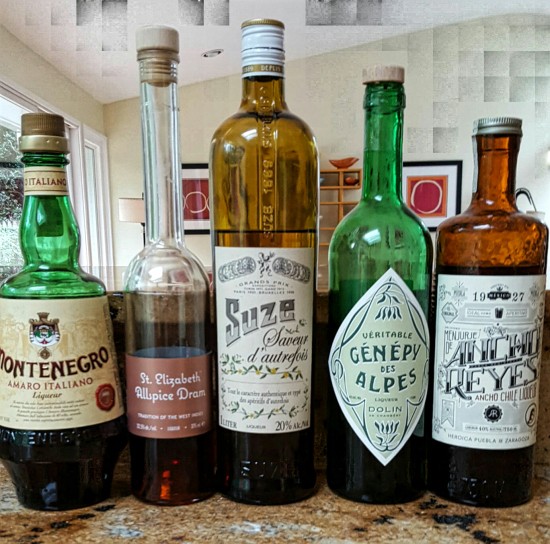“Session” & obsession
Contributed by on Apr 29, 2016
Three readers love this post.

Sessionable beverages: You can drink all night, if for some reason you wanted to do that.
Let us buy the elephant in the room a Hemingway daiquiri and have a frank talk: Cocktailing is one of the few recreational activities that, when pursued with an abundance of enthusiasm over long periods, can slowly kill you.
Assuming you use Uber judiciously, avoid bar fights, and don’t live in a concealed-carry state, the danger is not episodic but pernicious: The major bodily systems that can be incapacitated when subjected to excessive amounts of ethyl over time reads like the index of Gray’s Anatomy [the text, not the TV show, although maybe that too].
Of course alcohol in moderation has considerable health benefits, and other life habits create even greater risk of harm and death — texting while walking leaps to mind.
Anyhow: I’m only about 4 years into my cocktail adventure — still a senior in the school of adult beverages, so to speak — but I already well understand that a kind of mindful calibration is a necessary part of our secular practice.
The session obsession
And so we turn to our beloved frenemies, the beer geeks, to appropriate a practice that allows for indulgence while mitigating peril: “Sessioning.”
Among beer hounds, a “sessionable” beer is one with low alcohol by volume [ABV] but compelling qualities that one can enjoy for an extended “session” without fear of, say, waking up pantsless in a gravel pit with an unfamilar name written across your forehead in Sharpie.
The term has been adopted by cocktaileurs in the past few years, but I hear less of it in our area of interest. Moreso they are called “low-ABV” drinks. Essentially they are cocktails that eliminate the base liquor, usually mixing fortified wines, amaros, apertifs, bitters, citrus, fizzy toppers, and so forth. Many of the ingredients weigh in at 15 to 30 ABV, compared with 40 to 50% for most base liquors.
I first encountered the word when talking to one of D.C.’s great barkeeps. I was asking, as I often do, what they drink themselves. He just laughed: “Low ABV, man, low ABV.” I investigated and discovered a new sub-genre to explore.
A few days ago I was at the Top-10-in-D.C. Copy Cat Lounge and asked for a low-ABV bartender’s choice. We exchange knowing smiles and he came back with a concoction of Cynar [an artichoke [[!]]-based bitter liqueur], a Spanish vermouth, and lemon juice, with flamed orange garnish. Spectacular. I’m guessing 20 proof in the glass.
The lazy person's sessionable cocktails
One of the easiest ways to explore low-ABV drinks is to add a shot of your favorite liqueur to an Old Fashioned glass and top with a bit of club soda, still water, or a fat ice cube. Add a complementary or simpatico garnish. Some play well with tonic.
I lined up a few of my current favorite liqueurs recently and tested them all with various amounts and types of water and mixers [pictured].
All made wonderful drinks — the Ancho Reyes Ancho Chile [20% ABV] liqueur very “peppery” in the sense of the vegetable, with less heat than you’d fear; Genepy des Alps [23%] an Old World high-herbal sipper; Suze [15%] a challenging French bitter that yields slightly when taken with an ice cube; and St. Elizabeth’s Allspice Dram [23%], whose sweet, strong spice nose gives up some rummy tones as it opens up. Only the thin-bodied Amaro Montenegro [23% ABV] suffered from the addition of any water. But taken neat its herbal, floral, orange notes produce a mild satisfaction.
I actually tried all of those in one long, enjoyable “session.” And woke up in my own bed, satisfied and undamaged, and feeling pretty damn good.


